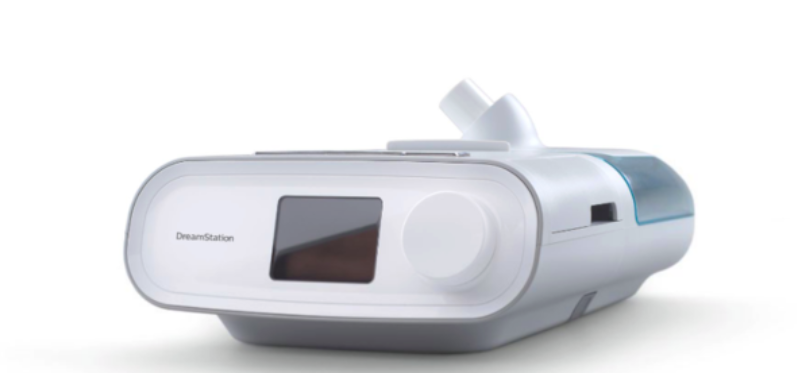PAP Machines: What’s The Difference Between CPAP And APAP?
dicembre 20, 2019

When it comes to positive airway pressure (PAP) machines, there isn’t a ‘one machine fits all’ model. In fact, there are three different types of machines that you can purchase. This blog post will talk about the differences between two of the most common sleep apnea machines: APAP and CPAP.
Buying A PAP Machine: Confused About The Different Types?
If you have recently been diagnosed with a sleep disorder such as obstructive sleep apnea (OSA), you may be a little confused about the different types of PAP machines that are available on the market.
Your doctor would normally prescribe you a PAP machine that will treat your sleep apnea symptoms best. So, no need to worry about having to try and figure that one out. Yet, you might still be wondering what the differences are between each machine.
Before we start discussing the differences between a CPAP and APAP machine, here’s a brief crash course on what a PAP machine is. These devices are designed to counteract the symptoms of sleep apnea by using air pressure to hold the airways open. They consist of the following parts:
- A motor
- Sleep apnea mask
- Tubing
Now that you know what a sleep apnea machine is comprised of, let’s dive into the most common types: APAP and CPAP machines.
What Is An APAP Machine?
Automatic Positive Airway Pressure (APAP) machines are defined by their ability to adjust air pressure automatically in order to provide the apnea patient with the amount of pressure needed to keep the patient’s airways open.
Your doctor will prescribe a minimum and maximum air pressure setting. The device will automatically determine the level of air pressure you need, between these settings, to counteract the sleep apnea events you are having during the night.
If you have varying breathing patterns, then you are a great candidate for using an APAP machine. This is because an APAP device is able to adapt to your changing breathing variations. APAP therapy is also beneficial if you experience situations such as:
-
You Switch Sleep Positions Often: Moving around often in the night can lead to changing pressure requirements. Sleeping on our backs requires a higher pressure setting than when sleeping on our side. If you switch between these positions often, your device will need to accommodate for these pressure changes.
-
Your Sleep Apnea Events Occur During REM Sleep: During REM sleep, our throat muscles relax even more than at other stages of sleep making it possible for more sleep apnea events to occur. With an APAP machine, the device will monitor these sleep stages and change the pressure according, providing you with higher pressure only when you need it.
-
You Suffer From Allergies Or Sinus Infections: If you suffer from allergies or sinus infections, it is normal for your breathing patterns and air pressure requirements to vary frequently. When our nasal passages are blocked, we might need a higher, more consistent air pressure level than usual.
One of the main benefits of this PAP machine is the fact that it has the ability to change between pressure settings. Some sleep apnea sufferers are often more sensitive to higher pressure levels. So, a variable pressure machine may mean more comfort and better sleep quality for those patients.
What Is A CPAP Machine?
Continuous Positive Airway Pressure (CPAP) machines have long been known as the gold standard for sleep apnea therapy. This device is a fixed pressure machine and delivers a continuous, steady level of pressurized air to the OSA patient during sleep.
Unlike the APAP machine, CPAP therapy only delivers one airway pressure level which is prescribed by your doctor upon diagnosis of your sleep apnea. Patients who have mild to moderate OSA are usually prescribed to use a CPAP machine.
If you experience any of the following conditions, you may be prescribed a CPAP machine rather than an APAP machine:
Obstructive Sleep Apnea: Many patients who have been diagnosed with mild to moderate OSA are recommended CPAP therapy for treatment. The continuous delivery of air makes sure that no obstructions or apnea events occur.
Snoring: While we all snore sometimes if your snoring happens on a continuous basis then it often can be a sign that you’ll progress to having a sleep apnea disorder.
Upper Airway Resistance Syndrome (UARS): This is another form of sleep-disordered breathing and is the stage between moderate to severe OSA. This disorder causes your airway to reduce in diameter creating resistance. While you may not experience sleep apnea events, your breathing will be heavy and laboured.
Many people who suffer from OSA have praised how beneficial using a CPAP machine has been as part of their treatment to achieve better sleep health.
CPAP vs APAP: Buying Your First PAP Machine
While it is obvious to see the difference between both of these machines, the important thing to remember is that their purpose is to help you improve your sleep quality. While your doctor determines whether you are a CPAP vs an APAP user, you can rest assured knowing that you are getting the correct treatment for you.
Shopping for PAP machines may feel a little overwhelming but with the right prescription, you are heading in the right direction. Unsure about which APAP or CPAP machine is right for you? Get in touch with our PAP machine experts who will help you choose the right one for you.
Share:
Leave a comment
Comments will be approved before showing up.




